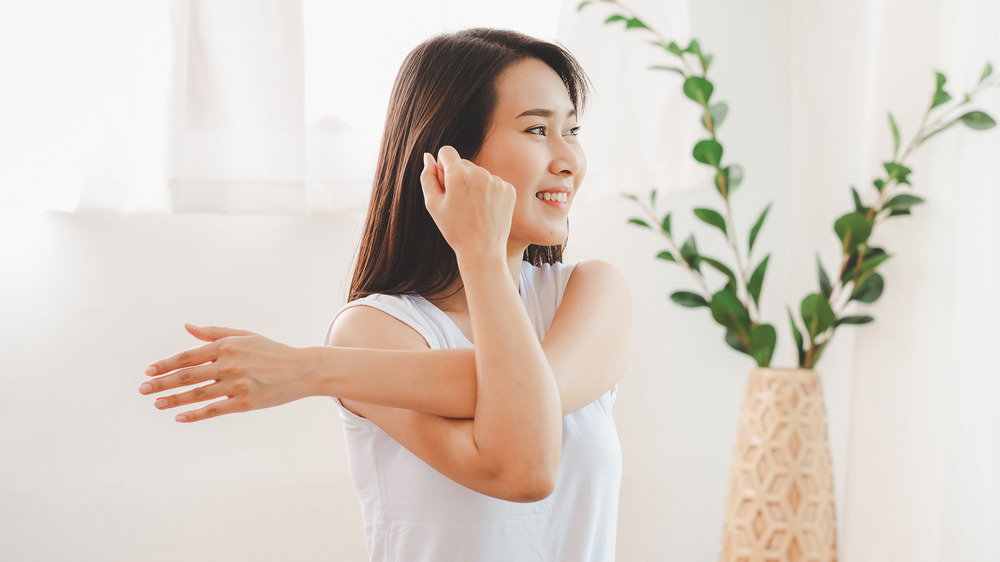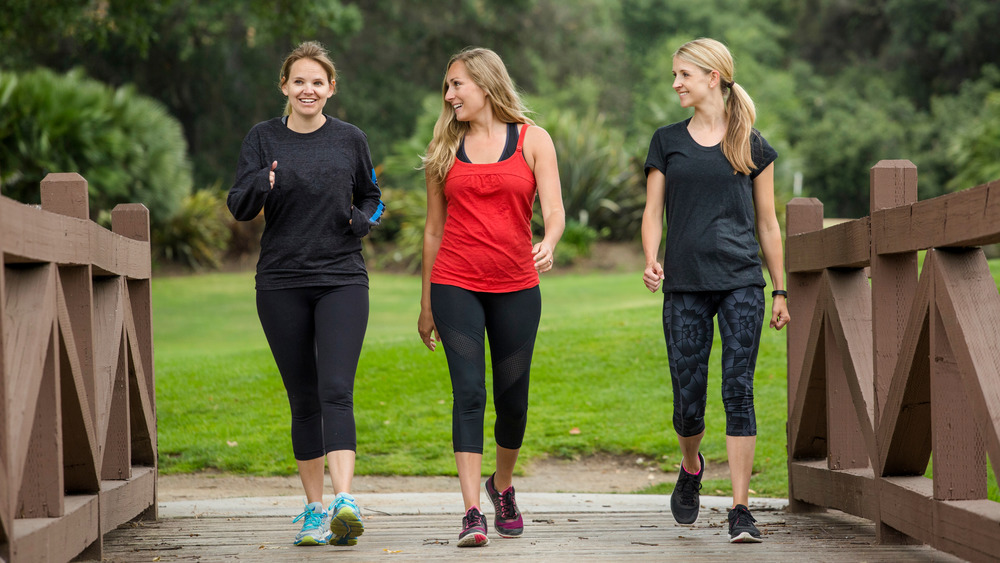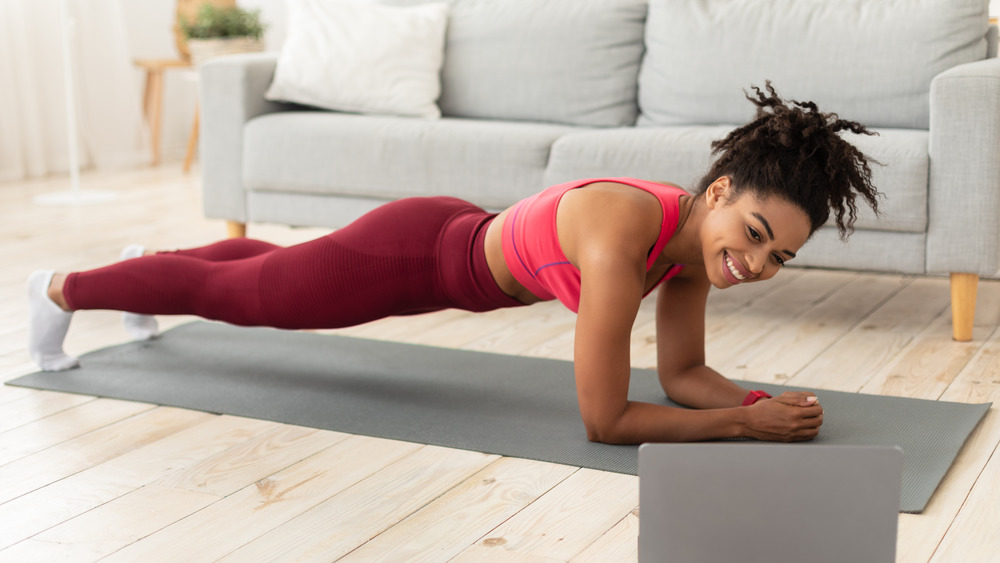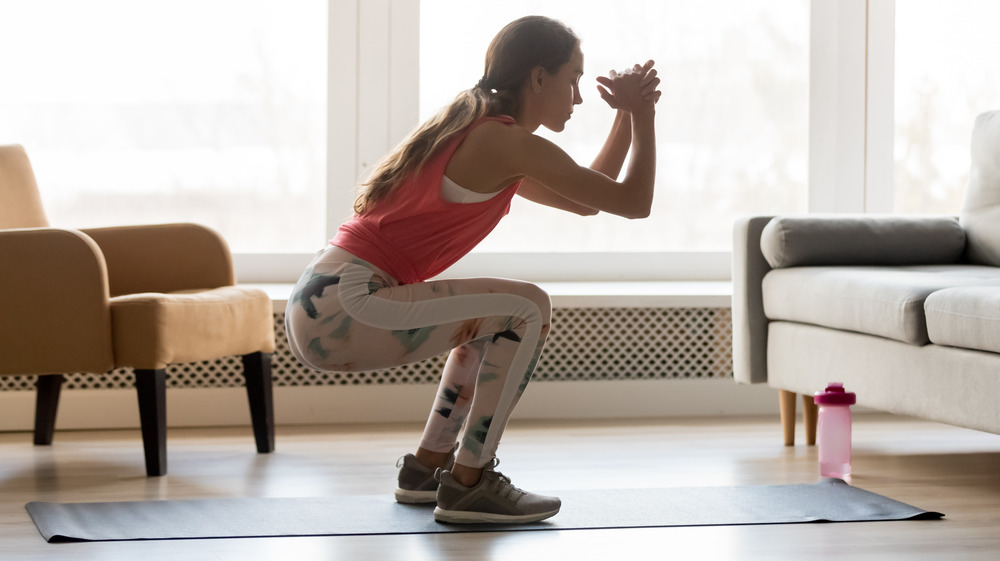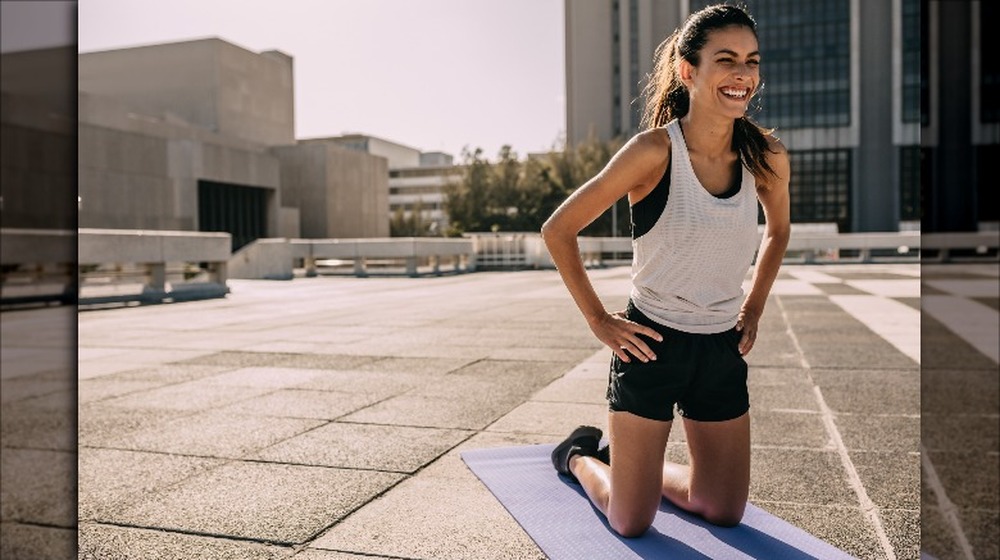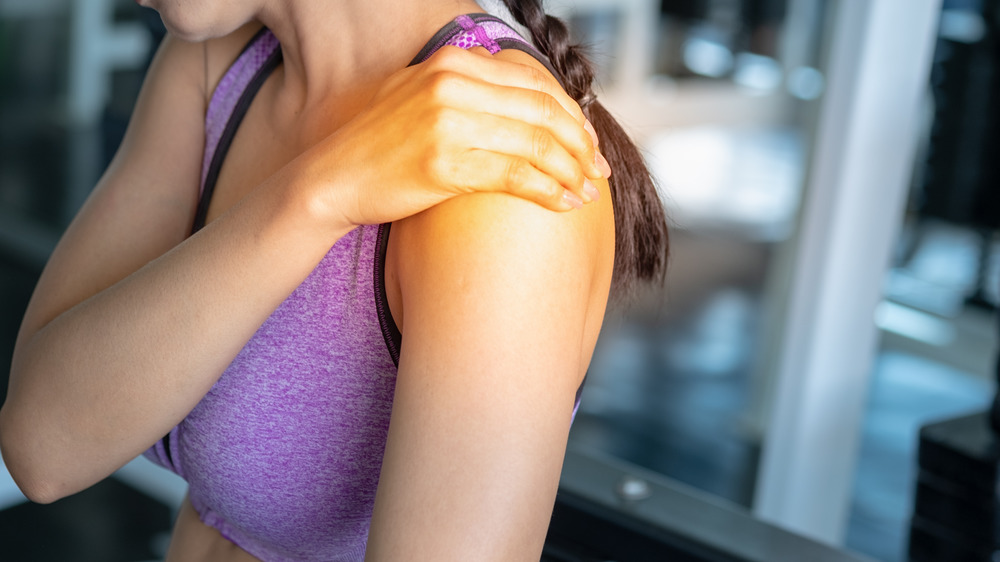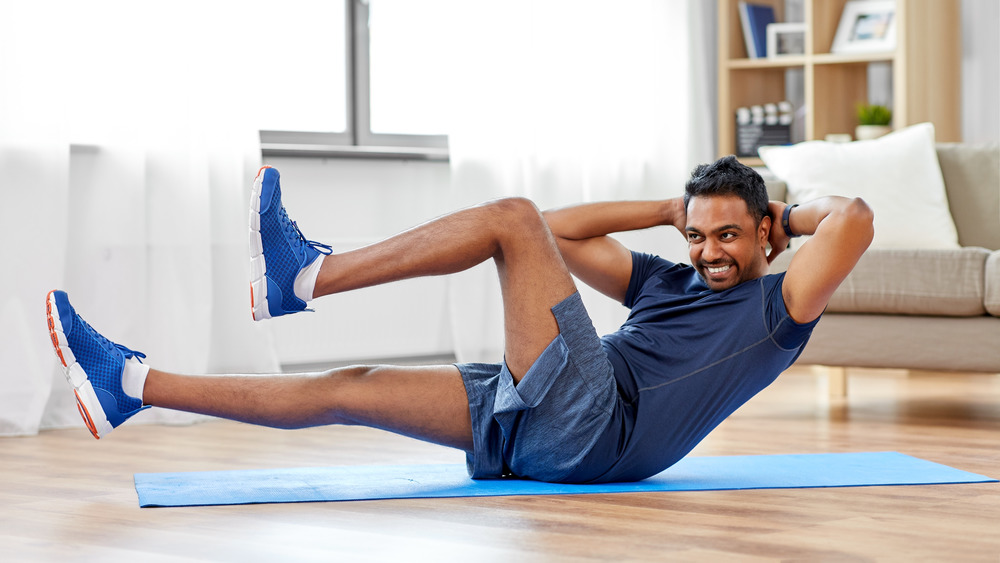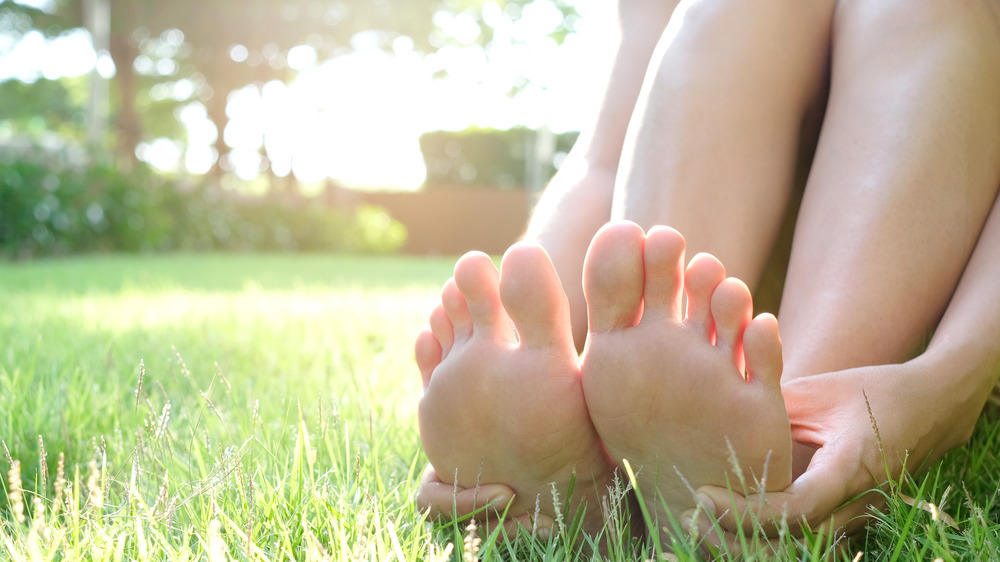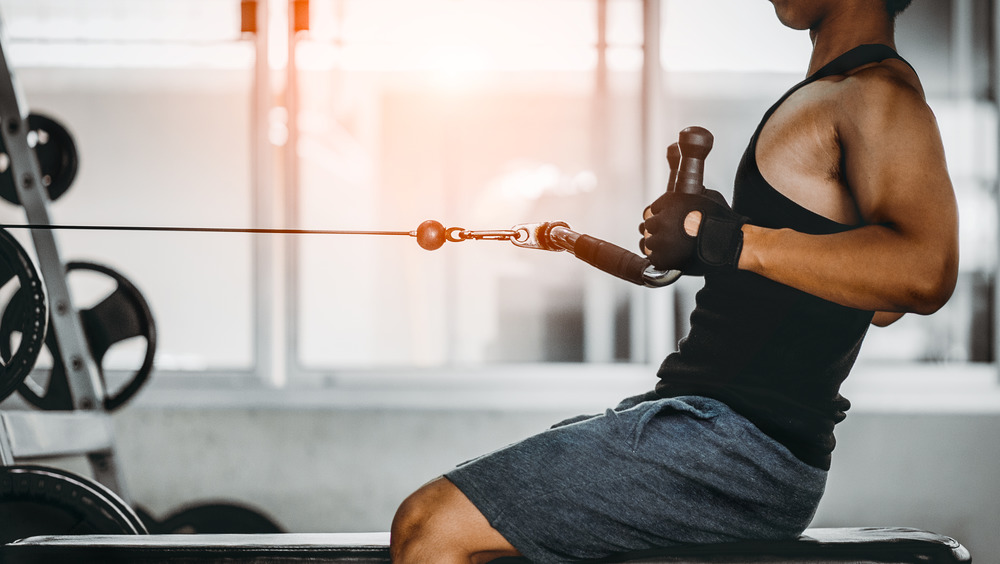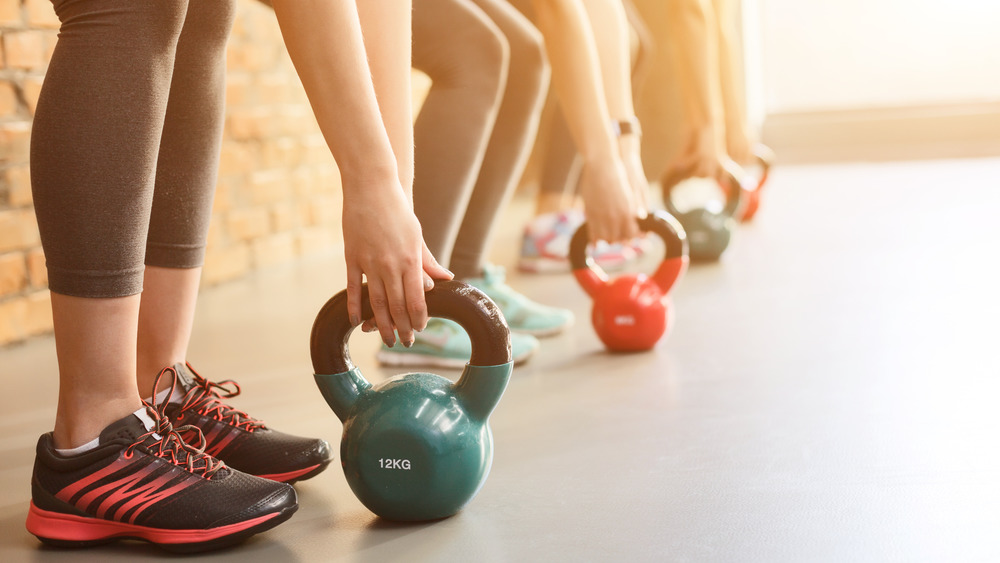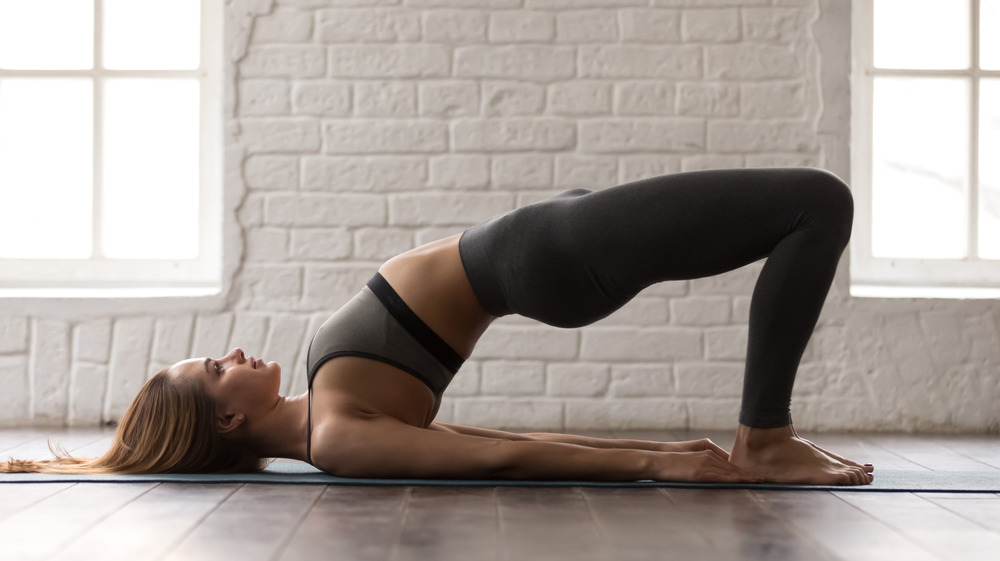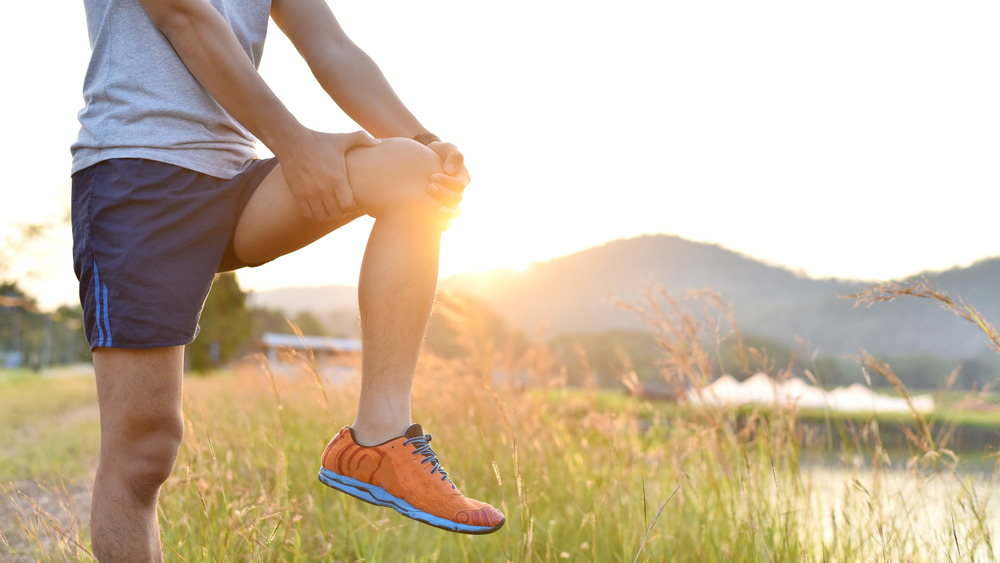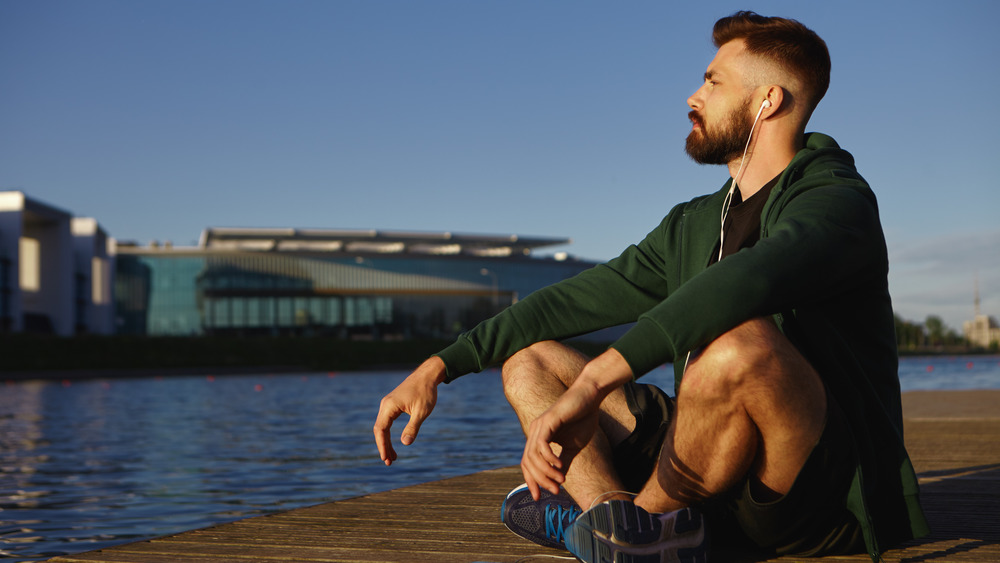Underrated Exercises You're Probably Not Doing
There's no denying that exercise provides lifelong benefits. Studies have confirmed exercise increases longevity and staves off illness (via Cold Spring Harbor Perspectives in Medicine). And while many likely have a regular exercise habit, others of you might be trying to form a new habit and make exercise a part of your healthy lifestyle.
Either way, incorporating exercise into your life might feel like a relatively easy decision, but determining what exercises you should do might pose questions. This may be especially true if you grew up doing sit-ups or pushups (complete with poor form) in gym class or started working out on Nautilus machines when you first joined a gym.
Just as there are some seriously overrated exercises, there are some exercises that are underrated — many of which can help us address modern-day challenges. While one may help you minimize stress, another can relieve muscular tension. "[We] can combat pain found in the body by easily exercising certain muscles we typically wouldn't think to," Nate Ho, fitness director of the UFC GYM in Mililani, Hawaii told Health Digest. Here's a look at some of the best and seriously underrated exercises to try.
Walking doesn't get the recognition it deserves
Walking just might be the most important exercise people don't do, but should. It is good for both your mental health and physical health. "Not enough people get outside," Kyle Elliott, certified health education specialist, told Health Digest in January 2021. "Walking is a low-impact, high-reward exercise that is good for your mind and body. Walking not only gets you out of the house, which is particularly important right now, but it also gets your body moving, your blood flowing, and your metabolism going faster."
According to Healthline, walking increases heart and lung health and fitness. It builds bones. It's a key component of gait training — physical therapy for those who have been immobile. It also boosts your mood while being easier on the joints than running.
"Walking is a physical activity that is accessible, does not require fancy equipment, and is both physically and mentally good for you," Lisa Herrington, an ACSM certified trainer and founder of the boutique fitness studio FIT House Davis, told Health Digest. "Carving out time for a 30-minute walk once a day or three 10-minute walks will make you feel better from the inside out."
Planking should be a part of your fitness routine
The plank is one of the most underrated full-body exercises that exist. It works your core, the abdominal muscles around your trunk and pelvis. And a muscular abdomen isn't just aesthetically pleasing; a strong core allows your body to do many other physical activities with more ease — from swinging a golf club to riding a bike to even just bending down to tie your shoes (via Mayo Clinic).
"It's essential to plank at least once a day for at least 30 seconds to one minute," Sergio Pedemonte, certified personal trainer and CEO of Your House Fitness, told Health Digest. "It allows the body to activate and strengthen the core muscles, the primary muscles it works."
Strengthening your core will also help you avoid lower back pain. "A plank, whether you are on your forearms or your hands and your knees are up or down to modify the position, works all the muscles in your core and provides a resistance exercise for your upper body and lower body," Lisa Herrington, an ACSM certified trainer and founder of the boutique fitness studio FIT House Davis, told Health Digest. "The stronger your core, the less [work] your back has to do."
Squats are uniquely beneficial
Stand up. No, I mean it. Get up out of your seat and stand for a second. There, doesn't that feel better? Well, even if it doesn't, know that it's better for us to get up more often than we do. We spend so much time sitting — more than half our day, according to Harvard Men's Health Watch — and that can be detrimental to our health, even putting us at higher risk for death. That's one reason squats are among the most important exercises you can do.
As it happens, we already squat at different times throughout the day: when sitting down on our chairs or in the restroom, getting into our cars, or using public transportation. "[Squats] are uniquely beneficial because they allow us to move safely," Kathryn Alexander, personal trainer and owner of Alexander Training, told Health Digest. "They mimic real life in a way that can help us increase our ability and decrease potential for injury."
Bodyweight squats can improve strength, build muscles, increase metabolism, and increase bone density. However, you can gain additional benefits by incorporating weights into the exercise, either by using a barbell or holding a kettlebell to your chest.
Kneeling squats are a fantastic exercise
If you hate doing squats (and let's be honest, many of us do), there's an alternative option for you: kneeling squats. Instead of squatting down and sending the hips back from a standing position, you sit back from a lifted kneeling position to then lift back up, driving your glutes forward. You've probably done these in reverse before, anytime you've gotten up off the ground after you've kneeled.
A 2019 study published in Physical Therapy Rehabilitation Science showed that a kneeling squat is both safe and effective as a proximal muscle (muscle nearest to the trunk) strengthener. "Most of us in today's society are very knee-dominant with our squats, primarily due to prolonged periods of sitting," Dani Singer, certified personal trainer and director of personal training at Fit2Go in Baltimore, told Health Digest. "The kneeling squat is a fantastic exercise to train your body in full hip flexion/extension, which will then carry over to your squats."
Yes, if we strengthen those muscles by performing kneeling squats, we are likely to be more comfortable shifting to a regular squat — an important exercise for our overall strength and mobility.
Rotator cuff exercises can protect you from injury
Fun fact: The shoulder is the most flexible and complex joint in the body. However, this means the shoulder is more susceptible to injury than other parts of the body. And our lifestyles — with all that sitting and poor posture (think: rounded shoulders) — weaken the shoulder muscles considerably. "Shoulders are often injured due to a lack of stability, strength, and mobility," celebrity trainer and fitness and nutrition expert Joey Thurman told Health Digest. "By adding some rotator cuff exercises to your routine you can protect your shoulder."
Beginners can start with a wall slide, as Invictus Fitness trainer Travis Ewart instructs in a YouTube video. "To increase the challenge, you can wrap a looped resistance band around your wrists and perform the exercise," Dr. Jordan Duncan, chiropractor and owner of Silverdale Sport & Spine, told Health Digest.
There are several other rotator cuff exercises that take your training one step further. "Exercises [that are] are banded or cable external and internal rotations," Thurman told Health Digest. "These will help work the rotator cuff, strengthen it, and also prepare your body for a workout."
Don't neglect core and pelvic floor exercises
There's more to your core than just your abs. Your abs are a part of your core, for sure, but your core muscle groups also include those in your pelvis, your lower back, and your hips (via Mayo Clinic). And it pays dividends to your health to keep those muscles strong. Physical therapist Patti Mariano Kopasakis told the Cleveland Clinic that there's a relationship between core strength and back pain. To head that pain off before it starts, incorporate core exercises into your routine.
"I have seen so many people, even those with good physiques, with very poor core and pelvic core strength," Vicky Adie, a physiotherapist and founder of Pilates Live, told Health Digest. "This can lead to a number of issues such as back pain or even continence issues." Even those who are quite active can benefit from strengthening their core and pelvic floor muscles. "For those [who] are active, such as runners, poor core and pelvic floor strength can also make them more prone to injury," Adie told Health Digest.
Diaphragmatic breathing has many benefits
Breathing as an exercise? You got that right. Because we're not talking about your regular breath — we're talking about a specific way to breathe that has been shown to decrease muscle tension in the neck and shoulders, relieve stress, and improve mood, among other benefits.
"Most people use an upper chest breathing strategy, which involves lifting the rib cage during inhalation rather than allowing the diaphragm to descend and the abdomen to expand," Dr. Jordan Duncan, chiropractor and owner of Silverdale Sport & Spine, told Health Digest. "A formal diaphragmatic breathing practice can help engrain this movement pattern into the central nervous system and promote a proper breathing stereotype during the rest of the day, leading to the benefits listed above."
You can start a diaphragmatic breathing, or belly breathing, practice by sitting with one hand on your belly and the other on your chest. Inhale through your nose, mindful about your stomach pushing up against the hand resting there, while keeping your chest still. Then tighten the abdominal muscles while you exhale, again keeping your chest still (via Medical News Today).
Toe exercises are more important than you'd think
Anyone who has ever stubbed a toe understands how critical these little body parts are to our ability to stand. Nevertheless, toe muscles are often neglected in training programs, where the focus is on the larger muscles of the body. Still, building toe strength is of tremendous benefit — especially if you're dealing with arch or heel pain.
Dr. Jordan Duncan, chiropractor and owner of Silverdale Sport & Spine, told Health Digest, "These muscles function to provide stability to the foot when it pushes off the ground during running and walking, take stress off of the plantar fascia, Achilles tendon, and the long bones of the foot, as well as improve balance and decrease fall risk."
There are multiple ways to strengthen your toes. A few times a week, do some toe raises, toe extensions, toe splays, or toe curls (via Healthline). Just as you would for any other workout, warm up before performing toe exercises. This helps get the blood flowing to your extremities.
Neck flexion and rotation exercises combat text neck
With the shift to working from home, the ergonomics of our new (but not improved) posture are causing us issues, according to The Wall Street Journal. Yes, many have started experiencing headaches as well as neck, back, and shoulder pain.
"[Working from home], combined with more sitting or sedentary lifestyles in general (watching television, sitting and looking down at our screens), wreaks havoc on our posture, and places excess strain on the muscles and joints in the neck, shoulders, and upper and lower back," Kasia Gondek of Fusion Wellness & Physical Therapy in Los Angeles told Health Digest. "As a physical therapist and certified strength and conditioning specialist, the most common postural issue I see in my patients is called 'forward head posture' or 'text neck.'"
This posture, when viewed from the side, shows the head held in front of the chest bone, with shoulders hunched and the lower back rounded. To counteract this position, Gondek suggests a chin tuck: Begin in a seated or standing position, gently tuck your chin and bring the back of your head in line with your mid-back. Hold the position for 10 to 20 seconds then relax. Repeat five to eight times twice per day.
Pulling exercises will help you sit up straight
It might be totally cliché to picture a mother figure standing over her child telling them to stand up straight. And while pride in appearance might motivate this old-fashioned advice, there's a physiological reason good posture matters: Poor posture can cause fatigue, muscular strain, and even pain (via Healthline). Thankfully, pulling exercises can help strengthen the muscles that support good posture by working the muscles that pullback the shoulder blades, as Shape explained.
"Especially with all the sitting and working on computers we do, it's important to strengthen the muscles in between the shoulder blades," physical therapist Lindsay McGraw told Health Digest. "These muscles help you sit up straight and maintain good posture."
So just how do we incorporate pulling into our routines? "Doing exercises like a seated row, bent over row, reverse fly, and more can help you improve your posture and decrease the risk of neck and shoulder pain," McGraw told Health Digest.
Weighted carries are simple and functional
Who wouldn't want to move around their house and yard with ease, carry their children and grandchildren around without pain, and be all around more capable and independent? Enter: the strengthening exercise called weighted carries.
"Weighted carries are as simple as the name sounds," Kathryn Alexander, personal trainer and owner of Alexander Training, told Health Digest. "Pick up something, and walk. These can be done with dumbbells, kettlebells, weight vests, household items, children or cooperative pets. The weight can be carried held at the chest, on the back, side, or even in the elbows of bent arms. It can be very, very heavy or extremely manageable."
Weighted carries are important because there is enormous transference to real life. If we know how to move something and build our capacity to do it safely, we are protecting ourselves for the future. These exercises are also great for those looking to strengthen their core and increase their exercise capacity (via Men's Health).
Glute bridges and hip thrusts relieve back pain
For most, buns of steel don't come without some effort. Nevertheless, tightening up your glutes also reduces lower back and knee pain. The basic bridge, also known as a hip raise or a glute bridge is a beginning exercise that concurrently strengthens the glutes while relieving pressure from your back (via Verywell Fit). Simply lie on your back with your knees bent, feet flat on the floor, and arms at your side with your palms down. Then lift your hips off the ground until your shoulders, hips, and knees are in alignment.
Another bridge exercise to try is a hip thrust. "A hip thrust is similar to a glute bridge except the upper body is elevated instead of flat on the ground and with more glute activation," Dr. Daina Patel, chronic pain chiropractor, told Health Digest. "This movement teaches core engagement, lumbar stability, core strength, glute (butt) strength and hamstring strength," Heather Lachance, corrective exercise specialist and founder of Made Possible Personal Training, told Health Digest. "All these muscles support the human body in natural movements like standing, sitting for long periods of time, getting up and down, and walking."
Regular stretches are vital for good health
Most people recognize the importance of stretching before and after exercise. But do they actually abide by the recommendation, stretching in their regular exercise routine? Or better yet, in their everyday lives? "A lot of people don't understand that stretching has to happen on a regular basis. It should be daily," David Nolan, a physical therapist at Massachusetts General Hospital, told Harvard Health Letter.
Regular stretching keeps muscles flexible, strong, and healthy. "Our bodies are designed to move, and with more people working from home, it is easy to get stiff in our joints and tight in our muscles," Vicky Adie, a physiotherapist and founder of Pilates Live, told Health Digest.
One way to adopt a regular stretching routine? Allow a few minutes each day for basic yoga poses like child's pose, cat or cow pose, or knees-to-chest pose. "Usually people who don't like yoga don't like the slow pace of it and find holding poses mundane, meaning they get bored easily," certified personal trainer and yoga instructor Justine Swenson told Health Digest. "However, they should be trying to incorporate slower deeper stretch exercises into their routines. These poses are just as important for your health as faster and higher impact exercises."
Meditation and exercise go hand in hand
While you may not think meditation falls into the category of physical exercise, it is a powerful mental and emotional fitness tool that people often overlook. "Meditation reduces stress, controls anxiety, improves concentration, mindfulness and the ability to live in the present moment," Lisa Herrington, an ACSM certified trainer and founder of the boutique fitness studio FIT House Davis, told Health Digest.
In fact, meditation and more traditional exercise training "share similar mechanisms that can improve global mental health, inducing adaptive responses to stress," according to a 2018 study published in the Journal of Health Psychology.
If meditation is new to you but working out is not, consider a guided experience before your next workout. There are many options available, as guided meditations can easily be accessed via apps or websites. The goal should be to focus on your breath and notice the physical sensations present in your body. This level of mindfulness can improve your resolve and increase your motivation in the present moment.

